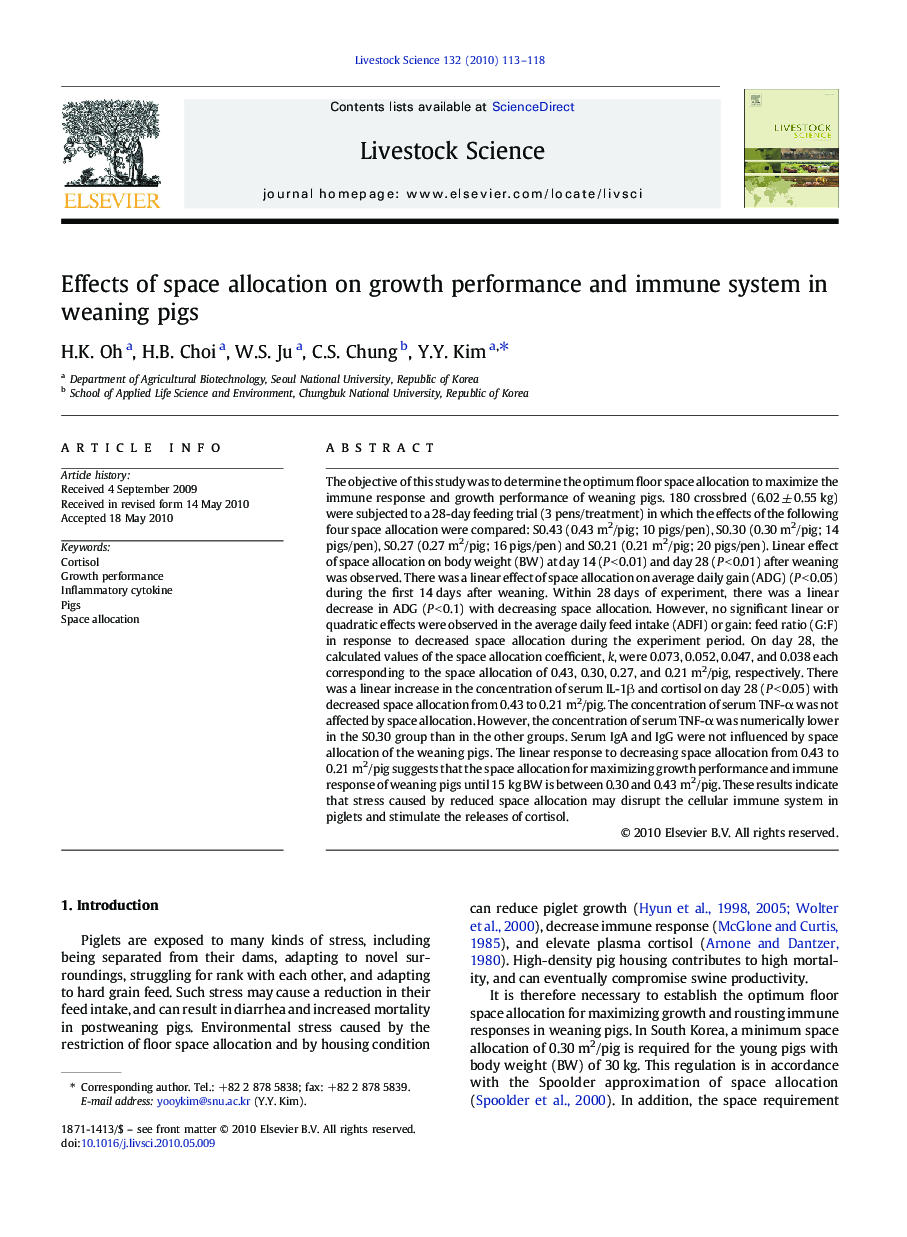| Article ID | Journal | Published Year | Pages | File Type |
|---|---|---|---|---|
| 2447760 | Livestock Science | 2010 | 6 Pages |
The objective of this study was to determine the optimum floor space allocation to maximize the immune response and growth performance of weaning pigs. 180 crossbred (6.02 ± 0.55 kg) were subjected to a 28-day feeding trial (3 pens/treatment) in which the effects of the following four space allocation were compared: S0.43 (0.43 m2/pig; 10 pigs/pen), S0.30 (0.30 m2/pig; 14 pigs/pen), S0.27 (0.27 m2/pig; 16 pigs/pen) and S0.21 (0.21 m2/pig; 20 pigs/pen). Linear effect of space allocation on body weight (BW) at day 14 (P < 0.01) and day 28 (P < 0.01) after weaning was observed. There was a linear effect of space allocation on average daily gain (ADG) (P < 0.05) during the first 14 days after weaning. Within 28 days of experiment, there was a linear decrease in ADG (P < 0.1) with decreasing space allocation. However, no significant linear or quadratic effects were observed in the average daily feed intake (ADFI) or gain: feed ratio (G:F) in response to decreased space allocation during the experiment period. On day 28, the calculated values of the space allocation coefficient, k, were 0.073, 0.052, 0.047, and 0.038 each corresponding to the space allocation of 0.43, 0.30, 0.27, and 0.21 m2/pig, respectively. There was a linear increase in the concentration of serum IL-1β and cortisol on day 28 (P < 0.05) with decreased space allocation from 0.43 to 0.21 m2/pig. The concentration of serum TNF-α was not affected by space allocation. However, the concentration of serum TNF-α was numerically lower in the S0.30 group than in the other groups. Serum IgA and IgG were not influenced by space allocation of the weaning pigs. The linear response to decreasing space allocation from 0.43 to 0.21 m2/pig suggests that the space allocation for maximizing growth performance and immune response of weaning pigs until 15 kg BW is between 0.30 and 0.43 m2/pig. These results indicate that stress caused by reduced space allocation may disrupt the cellular immune system in piglets and stimulate the releases of cortisol.
